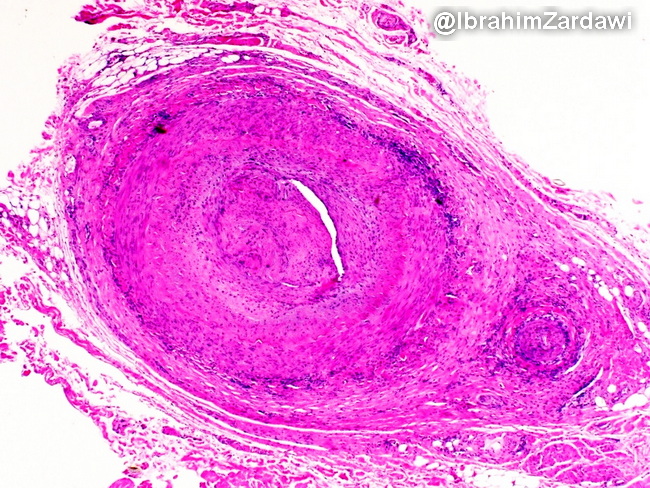Giant Cell Arteritis : Treatment


Comments:
Treatment of Giant Cell Arteritis (GCA): Corticosteroid therapy is the mainstay of treatment. There is rapid response but relapses are common, necessitating prolonged treatment (up to 2 years). Even the patients with negative temporal artery biopsy (about 40% of cases) respond to steroids. Prognosis: GCA is an indolent, chronic disease that responds to steroid treatment. Clinical course may be complicated by blindness, stroke, aortic dissection and aneurysm rupture (when aorta is involved). The image shows temporal artery with transmural inflammation and severe luminal narrowing due to intimal hyperplasia. Note the inflammatory changes extend to the small vessel to the lower right in the tunical adventitia. Image courtesy of: Dr. Ibrahim Zardawi; used with permission. References:1. Miller, D. V. & Revelo M. P. (2014). Diagnostic Pathology - Cardiovascular. Amirsys Publishing, Inc.2. Sheppard, M. N. (2022). Practical Cardiovascular Pathology 3rd Edition, CRC Press.3. Maximilian B. & Butany J. (2022). Cardiovascular Pathology 5th Edition, Academic Press.4. Goldblum, J. R. et al (2018). Rosai and Ackerman's Surgical Pathology 11th Edition, Elsevier Publications.5. Jennette J. C. et al. 2012 Revised International Chapel Hill Consensus Conference Nomenclature of Vasculitides. Arthritis & Rheumatism, Vol. 65, No. 1, January 2013, pp 1-11.


